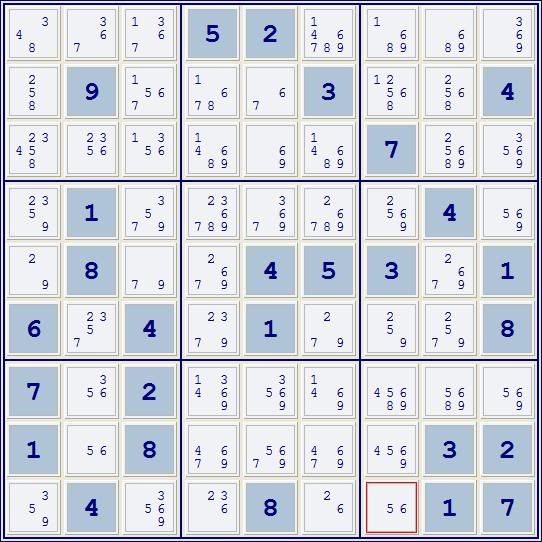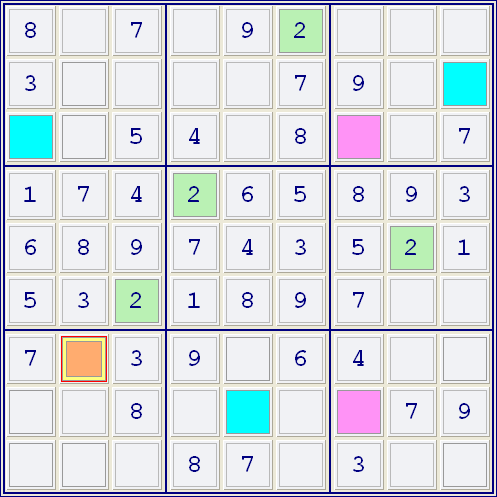|.9.|..3|..4|
|...|...|7..|
|---+---+---|
|.1.|...|.4.|
|.8.|.45|3.1
|6.4|.1.|..8|
|---+---+---|
|7.2|...|...|
|1.8|...|.32|
|.4.|.8.|.17|
I can't find next move
Can you help me ?:P


Pappocom wrote:tso (about Nishio) wrote:...remember, he's the one who invented Sudoku in it's present form and is most responsible for it popularity in Japan.
Neither statement is correct. Perhaps you are confusing Nishio and Nikoli?
- Wayne
PaulIQ164 wrote:And at any rate, just because you invent something doesn't mean you automatically know what's best to do with it.
"And for those who think shooting people is wrong, remember that the guy who invented the gun thinks it's okay."
Pasy111 wrote:tso how did you know to search Nisho in 3's ?
did you use pc solver or you check 1's amd 2's first
i never heard about Nisho so i'm asking
p.s sory for my English
tso wrote:If you have Simple Sudoku, SadMan or other software that will allow filtering, try it on 3's.


tso wrote:When performing a Nishio, only one digit is considered, in this case, the digit '3'. The solver is looking to see if placing the digit in a particular cell will still allow placement of the rest of the matching digits.

Jeff wrote:It's not a chain, but a net.
r6c6=2 => r3c6=7 => r2c2=7 => r9c2=2
r6c6=2 => r7c4=2 => r8c8=2 => r3c7=2 => r2c1=2 (since r2c2=7) => r4c2=2 => r9c2<>2
Therefore r6c6<>2
tso wrote:If you filter on 2's alone, you'll have no trouble placing all nine 2's.
tso wrote:Is there a definition for "net" in this context?
Guest wrote:
- Code: Select all
. . . | 5 2 . | . . .
. 9 . | . . 3 | . . 4
. . . | . . . | 7 . .
-------+-------+------
. 1 . | . . . | . 4 .
. 8 . | . 4 5 | 3 . 1
6 . 4 | . 1 . | . . 8
-------+-------+------
7 . 2 | . . . | . . .
1 . 8 | . . . | . 3 2
. 4 . | . 8 . | . 1 7
tso wrote:1) If the 3 in box 8 is r9c4,
2) then the 3 in box 5 will be r4c5, AND the 3 in box 7 will be r7c2.
3) There is no now place for a 3 in box 4. This is a contradiction.
Therefore, we can eliminate the candidate 3 from r9c4.